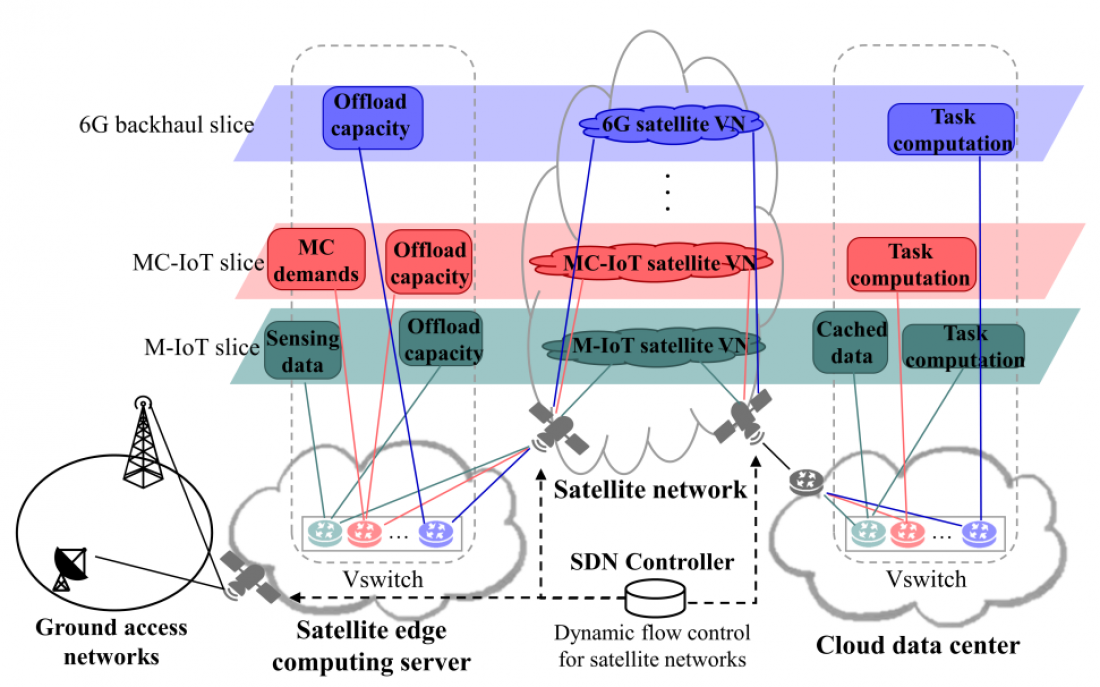□ Two research teams, one led by Professor Jeongho Kwak of the Department of Electrical Engineering and Computer Science at DGIST (President Kuk Yang) and the other by Professor Jihwan Choi of the Department of Aerospace Engineering at KAIST (President Kwang Hyung Lee), have developed new edge-computing offloading and network-slicing techniques that can be utilized in next-generation low Earth orbit (LEO) satellite network systems.
□ “LEO satellite network” refers to a communication network that provides stable Internet services using satellites that orbit 300-1500 km from Earth. Unlike base stations built on the ground, to and from which radio waves are occasionally obstructed by mountains or buildings, LEO satellites can be used to build communication networks in locations where base stations are difficult to deploy owing to low population density by launching the satellites into orbit. Therefore, LEO satellite networks have received attention as next-generation satellite-communication systems that can rapidly provide communication services to more diverse regions.
□ Edge computing differs from cloud computing in that data is processed in each device in a distributed manner. Since data is processed and the computational results are applied to the edge where the data is collected, congestion in the data center can be mitigated.
□ Although studies on edge computing in existing terrestrial networks have been actively conducted, a different approach is needed to apply edge computing to LEO satellites. This is because all satellite components of the core networks, including LEO satellite networks, are connected wirelessly, and the satellites orbit around the Earth at a very high speed. Furthermore, the satellites have a lower power supply and computing power than terrestrial networks. Therefore, customized solutions are needed for new areas that have not been covered by terrestrial networks.
□ Therefore, Professor Jeongho Kwak and Professor Jihwan Choi’s research teams proposed a network slicing technique[1] that harnesses the distribution and movement characteristics of LEO satellites and the characteristics of wireless-channel environments in a scenario with several virtualized services. At the same time, they also proposed a code and data-offloading technique[2] for satellite-edge computing.
□ The edge-computing and slicing techniques developed for LEO satellites in this research are significant because they advance the domestic satellite network technology one step further. However, in South Korea, this technology is still in the early stages compared with overseas countries, where LEO satellite Internet services such as Elon Musk's Starlink are being commercialized.
□ Professor Jeongho Kwak of the Department of Electrical Engineering and Computer Science at DGIST stated, “This research analyzed the effect of network slicing and code/data offloading ratio according to the changing LEO satellite environment." He added, "Our goal is to provide a blueprint for novel applications for LEO satellites in the 6G era in the future."
□ Meanwhile, the research results were published in the IEEE Internet of Things Journal on August 1, 2022, with Taeyeon Kim, a Ph.D. student of the Department of Electrical Engineering and Computer Science at DGIST, as the first author.
Correspondent author's e-mail address : [email protected]
[1] Network slicing: A technology that can provide personalized services by dividing one physical “core network” into multiple virtual networks.
[2] Offloading technique: Distributes rapidly increasing data traffic to other networks



